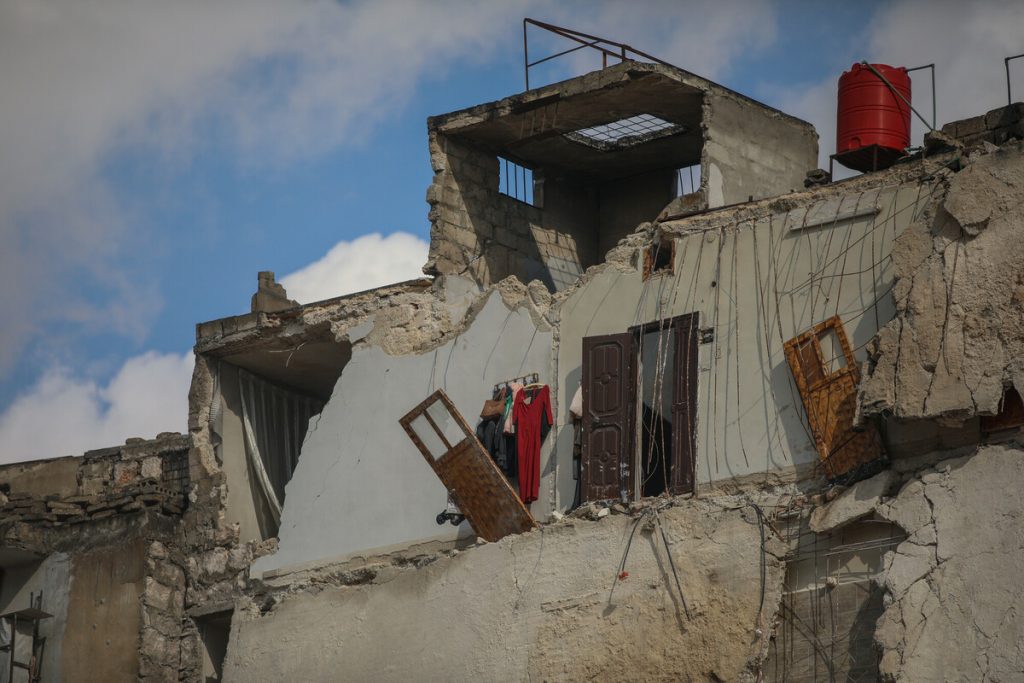The Geneva II peace process for Syria – reflections from the shore of Lake Geneva
by Shaheen Chughtai, Oxfam Great Britain
Nestling between picturesque snow-capped mountains and the shimmering waters of Lake Geneva lies the Swiss town of Montreux, which hosted the opening day of the Syria peace talks just a few short weeks ago.
Well over 100,000 people have died in the conflict – a toll that rose every day the talks unfolded in Switzerland. Almost 10 million people in and around Syria need some form of emergency relief to survive. Neighboring Lebanon and Jordan are being overwhelmed by the huge influx refugees: about 20% of Lebanon’s population is now Syrian.
Early steps
After three years of conflict and abortive attempts to start negotiations, the fact that the talks in Switzerland took place at all and continued as planned until 31 January is a success. Every journey, however long and difficult, must begin with an initial step – and news that the first meetings between Syrian officials and opposition delegates were taking place gave millions of hard-pressed people in the Middle East a rare glimpse of hope.
Even so, the lack of any significant and sustained agreement – particularly to ensure besieged and hungry civilians can safely obtain food, water, and medical care – was hugely disappointing. Each day of deadlock and political posturing costs lives and rips another thread from the fabric of Syrian society.
As talks resume today, they must deliver real results for people on the ground, starting with safe and reliable access to life-saving humanitarian assistance for all civilians caught in the conflict.
Humanitarian aid is not a long term solution, however – only a just and lasting peace can deliver that. Indeed, the record-breaking $6.5 billion the United Nations is seeking for the humanitarian response this year highlights how unsustainable the situation is. That is why every effort must be made to ensure the Syria peace process succeeds in delivering an effective agreement that enjoys wide and lasting support.
Civil society – the missing piece
Fragile and fractious, the Syria peace process seems like a complex jigsaw puzzle – and so it makes sense to ensure that any relevant actors who can help it reach a successful conclusion are involved.
Men and women representing Syria’s diverse and peaceful majority can potentially support the peace process in many ways: bridging differences between opposing sides, proposing solutions to problems, and helping to implement agreements. They can also help ensure that agreements about Syria’s future are equitable and enjoy the confidence and support of all Syria’s diverse communities.
There are examples from around the world of civil society figures playing a vital role in supporting peace efforts. When the National Pact of 1992 failed to end armed conflict in Mali, for example, local civic leaders worked with an international NGO, Norwegian Church Aid, to arrange inter-community meetings. These in turn led to local ceasefires, trading agreements and reconciliation efforts.
In Northern Ireland, the Women’s Coalition brought their commitment to ending violence as well as the perspectives and support of local women that helped secure the Good Friday Agreement of 1998.
In Geneva, I met several Syrian civil society figures committed to peaceful reform, human rights and equality. They had travelled to Switzerland but, frustratingly, were left standing outside the conference halls. Their energy, expertise and desire to help rebuild a just, peaceful and prosperous country have so far been ignored and untapped.
This weeks as talks continue by the cold, calm waters of Lake Geneva, let’s hope instead that such men and women can take their rightful place at the table.
The future of Syria and the fate of millions depend on it.
Follow Oxfam’s Geneva II Storify, for the latest from the Syria peace talks:
Shaheen Chughtai is Oxfam Great Britain Deputy Head, Humanitarian and Security Issues
This blog originally appeared at blogs.oxfam.org

